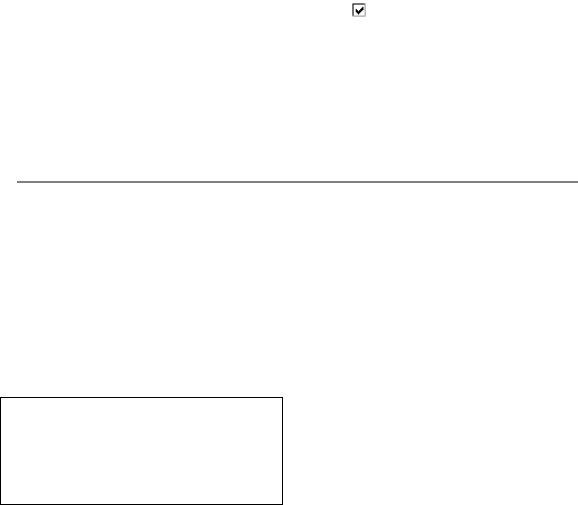
Scroll speed
Use this to set the scroll speed on the display.
There is a choice of: Very Fast, Fast,
Medium, Slow and Pause. The depth of the
water also affects the speed of the display.
Faster scroll speeds combined with a slow
boat speed (typically between 2 and 6 knots)
shows the most fish detail. Medium or Slow
scroll speeds result in sonar information being
displayed over a longer period, but with less
detail. See Section 4-1 Interpreting the display,
for more information.
Fish symbols
These appear only in the main sonar displays.
Fish symbols can be shown in three ways:
• As a fish symbol (Symbol).
• As a fish symbol with the depth
(Symbol+depth). The depth is shown
beside the fish symbol.
• As a depth (Depth). The depth is shown
above where the fish was detected
• Switched off (Off) so that echoes are not
converted to fish symbols but are displayed
directly.
See section 4-3 Fish detection and display, for
more information about fish symbols.
Fish sensitivity
Use this function to adjust the minimum fish
detection level. Select Low to reject noise and
small fish. Select High to detect maximum
number of fish.
Digit size
Use this to remove or change the size of the
depth display on the sonar displays. There is a
choice of: Small, Medium and Large.
Palette
Use this to select a color palette. Each color
within the palette represents a different echo
strength, as shown on the sonar displays.
There is a choice of three color palettes: Black,
White and High Contrast.
Interference filter
This filters the echo signal to reduce high-level,
spiky interference, such as engine noise and
makes small fish harder to see.
Select to add filter.
Pulse power
This can be used to specify the power output
of the transmitted ultrasonic pulse. Low power
output conserves the boat’s battery, but only
works in shallow water.
There is a choice of Auto, Low, Medium or
High. The Auto setting is recommended.
3-3 Setup > Fuel (available on 4433 only)
These features can be used only when the
optional single or twin engine fuel kit has been
installed.
Press MENU once or more until the Setup
menu is displayed, then select Fuel:
It is recommended that the fuel tank capacity is
measured by draining the fuel tank, then filling
it to capacity. After filling, note the reading
from the fuel dispenser’s gauge.
Note: Beware of air pockets, especially in
underfloor tanks.
Warning
Navman fuel kits are only suitable for petrol/
gasoline engines. Fuel consumption can
change drastically depending upon the boat
loading and the sea conditions. Always carry
adequate fuel for the journey, plus a reserve.
Tank full
Select Tank full each time the fuel tank(s)
are completely refilled. When asked Are you
sure? select Yes. Otherwise, the reading on
the Fuel display (see section 5-6 Fuel Display)
and the Low Fuel Alarm (see section
3 -5 Setup > Alarms) are meaningless.
Set remaining
Before doing a partial refill of the tank or
removing fuel manually from the tank (for
example, by siphoning it off):
1. Note the Remaining reading on the
Fuel display.
2. Note how much fuel is added or removed.
3. Calculate how much fuel is now in the tank.
4. Select Set remaining and update
the reading.
FISH 4432/4433 Installation and Operation Manual 12
NAVMAN


















